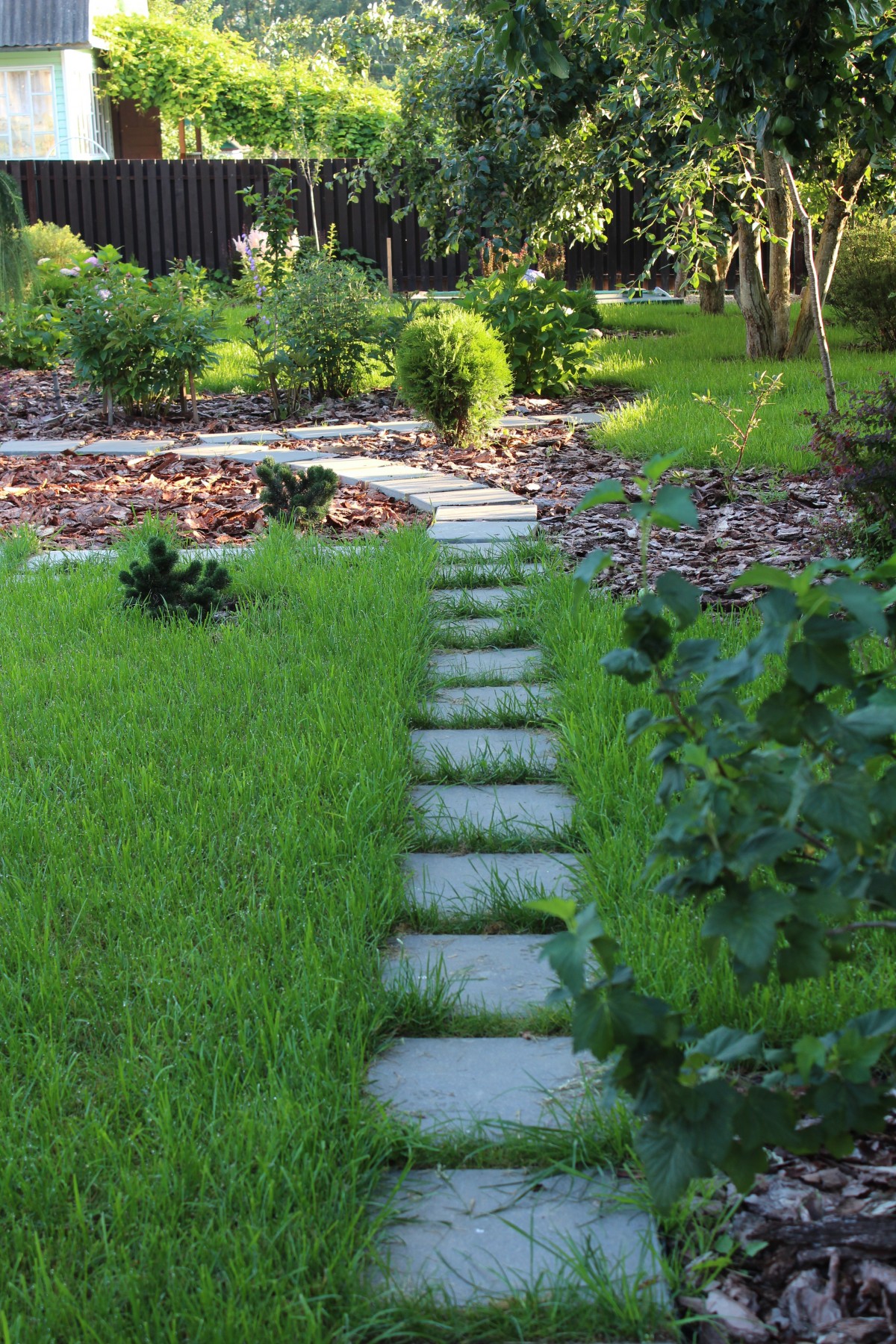If you have just had grass seed laid down for a new lawn, there are a few measures you can take to get things off to a good start. This little attention goes a long way in providing years of beauty and enjoyment.
Watering
The most critical requirement for germinating turf grass seed is sufficient moisture. Keeping the seed damp (either by rainfall or irrigation) will encourage proper seed development.
You can perform the first watering right away. This should moisten the soil to a depth of 2” to 3” – but gently. Be careful not to apply the water with such force that it washes away soil or dislodges the seed.
After the initial watering, irrigate the newly seeded area lightly and frequently (two to three times a day, if possible) until the grass begins to establish and mature. From there, you can lengthen the watering intervals and increase the amount applied at one time.
Activity
Too much activity on your newly seeded lawn can interfere with seed germination. For the two to three weeks after the new grass seed is put down, we recommend limiting the amount of activity on your lawn as much as possible. Otherwise, the wear and tear from foot traffic, pets, and bikes can create ruts and holes that could ruin the terrain and cause drainage problems.
Mowing
![]()
Your new lawn will be ready to mow when the grass blades are higher than the height at which they will generally be maintained. In other words, if you plan to regularly cut the lawn at 2½”, mow it for the first time when it is about 3” tall.
When mowing, it is a good idea to follow the general rule of thumb of never removing more than one-third of the leaf blade at any one time. Also, don’t mow if the ground is too wet, as this can clog the mower and spit back out clumps that smoother your lawn.
Another thing to keep in mind is that an essential requirement for proper mowing is a sharp mower blade. Instead of cutting the grass, a dull blade rips and shreds the grass, which can cause seedlings to actually be torn from the soil. Mowing with a dull blade also makes the plants more susceptible to other problems like brown leaf tips and disease infestation.
A Typical Next Step: Adding Trees & Shrubs to Your New Yard

A new lawn often lends itself to the planting of new trees and shrubs in a landscape. With that in mind, here are a few aftercare tips we recommend for getting your plants off a good start, too.
Watering
Deeply water the large shrubs and trees the first day by placing a slow-running hose at the plant base. Saturate the hole until it is thoroughly wet. Repeat this step every two days for the first week and then once a week after that.
Meanwhile, bed plantings may be watered by a sprinkler system to saturate the soil to a depth of 6”. Repeat this step every two days for the first week and then once a week after that point.
In the first week, misting plants a few times a day will help reduce wilting and leaf drop (more often on hot days). It is also worth noting that most shrubs and trees will wilt and drop leaves regardless of care. This is a normal process due to transplanting shock and should not result in permanent injury.
Ideally, your landscape should receive at least 1” of water per week (this includes natural rainfall). To determine soil moisture, take a soil sample at a depth of 6” and squeeze a handful of soil. If the ball of soil holds together when it is released but is not sticky, the soil moisture is favorable.
Long-Term Maintenance
To get the most satisfaction from your trees and shrubs for years to come, we suggest to:
- Continue watering (especially during hot, dry spells) and also in the late fall to ensure adequate moisture throughout the winter
- Trim dead and undesirable branches on trees and shrubs with clean, sharp pruning shears
- Pull weeds out of plant beds as they appear
- Remulch your landscape as necessary to maintain a 2” layer of mulch that will hinder weed growth, retain moisture, reduce rapid changes in soil temperature and give your landscape a fresh, clean appearance
- Edge your plant bed lines to highlight your landscape
It is also advisable to fertilize all your plantings with tree and shrub fertilizer, either in the early spring or the late fall.
Let us know in the comment section how you usually protect your new lawn.



